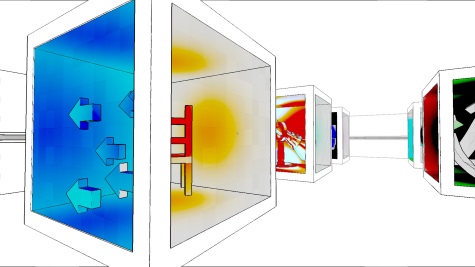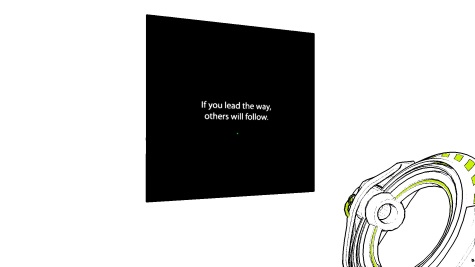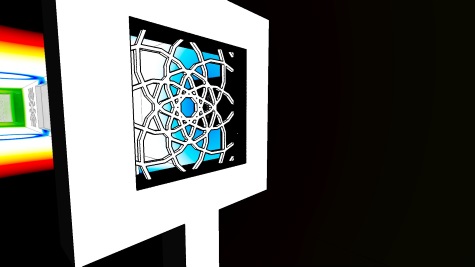After spending a couple of months on Dark Souls 2, I felt like playing something completely different and what could be more different than this minimalist puzzle game. This one was strongly recommended by a couple of people on Broken Forum so I bought despite feeling that I’m no longer quite smart enough to play puzzle games nowadays. It also helped that completing it would probably take less than ten hours.
As you can tell from these screenshots, the art is simple and austere with plain models with no textures and primary colors everywhere. The impression this fosters is that you’re wandering through some kind of avant-garde art gallery and this is exactly the right theme for a game like this. Antichamber is all about challenging the standard expectations of game spaces and the main rule is that there are no rules so you should explore and try everything. This means that spaces aren’t connected logically and if you go backwards from where you are, you often end up in a new place instead of where you were. The very act of observing or not observing elements in the world causes them to change and my favorite bit is that changing perspectives can change your own position in the world.
The puzzles are often accompanied by signboards with a picture and a text that reads like a Zen koan imparting wisdom. These work as either a pithy summary of the realization that you must have had to beat a puzzle or a clue about something that is coming up ahead. In lieu of achievements, Antichamber has a massive wall that records all of the signs that you’re read so far as well as a map of the puzzles that you’ve encountered and that you can use to warp to any room you’ve already been in. Presentation-wise and conceptually, this game is pretty much perfect.
Unfortunately I can’t quite give it top marks as a video game. The puzzles that challenge your sense of space and perception are fantastic and unique but there are only so many of these. Most of the puzzles in the game are really built around blocks of matter that you manipulate using a gun. There are several colors of the gun representing different levels of upgrade and it’s up to the player to experiment with them to discover their properties. Personally I don’t find these block manipulation puzzles to be as interesting, especially since it can be kind of fiddly to manipulate dozens upon dozens of three-dimensional cubes in a first-person view.
I also have to confess that I couldn’t solve all of the puzzles by myself. I’m used to puzzle games like The Talos Principle, which follows the Portal format of situating each puzzle into distinct rooms and making sure that everything that you need is in each room. Antichamber on the other hand is fluid. You often encounter puzzles at moments when it is impossible for you to solve them, either because you lack the correct color of gun or because you need to be holding sufficient cubes in your gun when you arrive at a particular puzzle. This is true even if you warp to a puzzle on the map. I instinctively believed that the game would be fair and give me everything I would need to solve the puzzle but this turned out to be not true. In some cases, you can only solve a puzzle after coming through a previous puzzle with the correct elements required.
This means that while Antichamber is so unique that I’d still recommend playing it just for the sake of experiencing its world, I think it’s markedly inferior to other games in having puzzles that are both fun and satisfying to solve.


